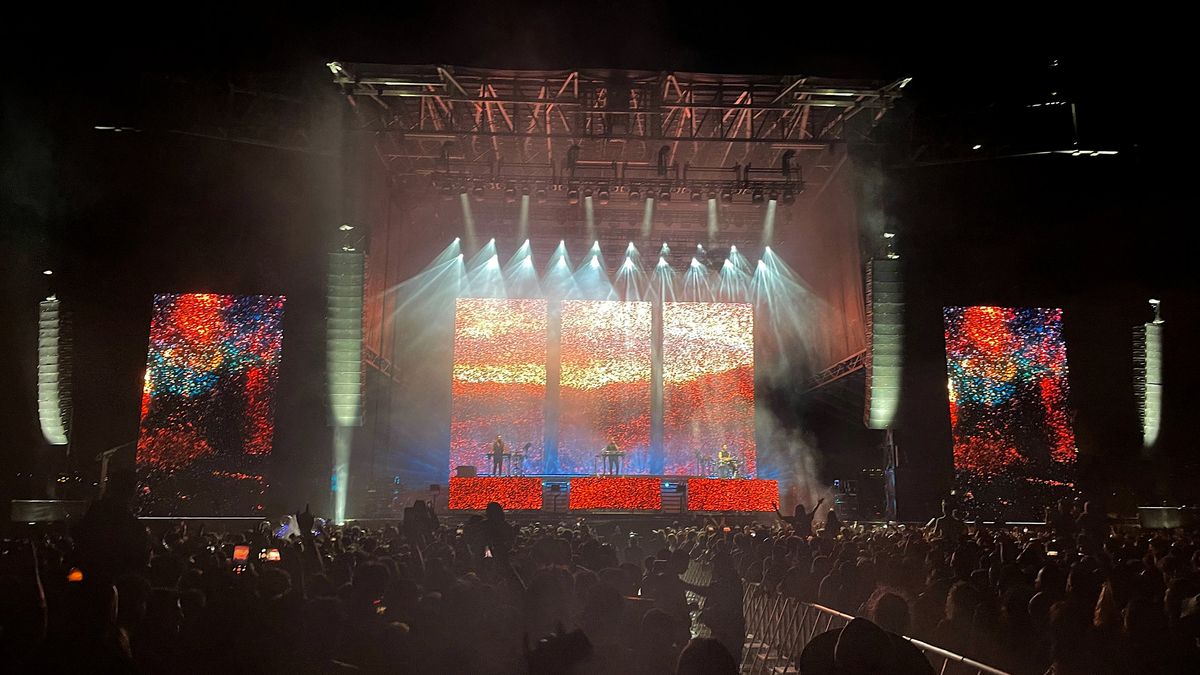The three-time Grammy-award-winning alternative dance/electronic media trio, Rüfüs Du Sol, is out on tour supporting their new album SURRENDER using d&b audiotechnik SL-Series loudspeakers provided by 3G Productions of Las Vegas and Los Angeles.
The Australian group from Sydney that consists of Tyrone Lindqvist, Jon George, and James Hunt are mostly performing in amphitheaters across North America in their tour that started in May and continues in the fall. “The tour required the latest and greatest in audio technology and sound quality, so the SL-Series was the obvious choice, ” stated Keith Conrad, CEO of 3G. “The system was able to deliver powerful even coverage throughout the venue with ArrayProcessing, while providing the best clean and quiet response behind the arrays for a better performance by the band on stage."
[Check Out the AV that Rocks Between the Dawn and the Dark of Night]
Full bandwidth directivity is one of the unique hallmarks of SL-Series, delivering quiet stages for the artists and maximum performance for the audience. Combined with d&b’s unparalleled ArrayProcessing, the system delivers a consistent experience for all the listeners.
GSL loudspeakers are hung as mains and KSL as outfills. 3G uses d&b’s ArrayCalc simulation software for planning and setup at all venues. “RDS carries 12 x GSL8s and 4 x GSL12s per side as the main arrays, combined with 12 x KSL8 and 4 x KSL12 per side for the side hangs,” explained 3G’s system engineer Adolfo Velez. “We were able to achieve even sub coverage using a sub array consisting of 20 x SL-GSUBs and had a widespread front fill coverage supported by 10 x V10P point source loudspeakers.”
[AV Network's top stories, product news, and expert insights]
Velez said there are different issues to face when you are touring the country and going to new places on every show. “A great challenge to face was noise regulation; in some cases, the venues were close to residences and the city would enforce a dB noise limit. In these situations, the venue can average measurements from around its perimeter and calculate a theoretical dB limit at front of house. Knowing the true power of SL-Series and ArrayProcessing, we asked for the mandated dB limit, along with the location of the measurement, then calculated the distance from the source. By doing so, we were able to provide more SPL at front of house than was “allowed” without breaking the dB regulation at the venue boundary. You could walk beyond the boundary and back and hear a significant dip in the sound pressure level, keeping our clients and the venues happy.”











